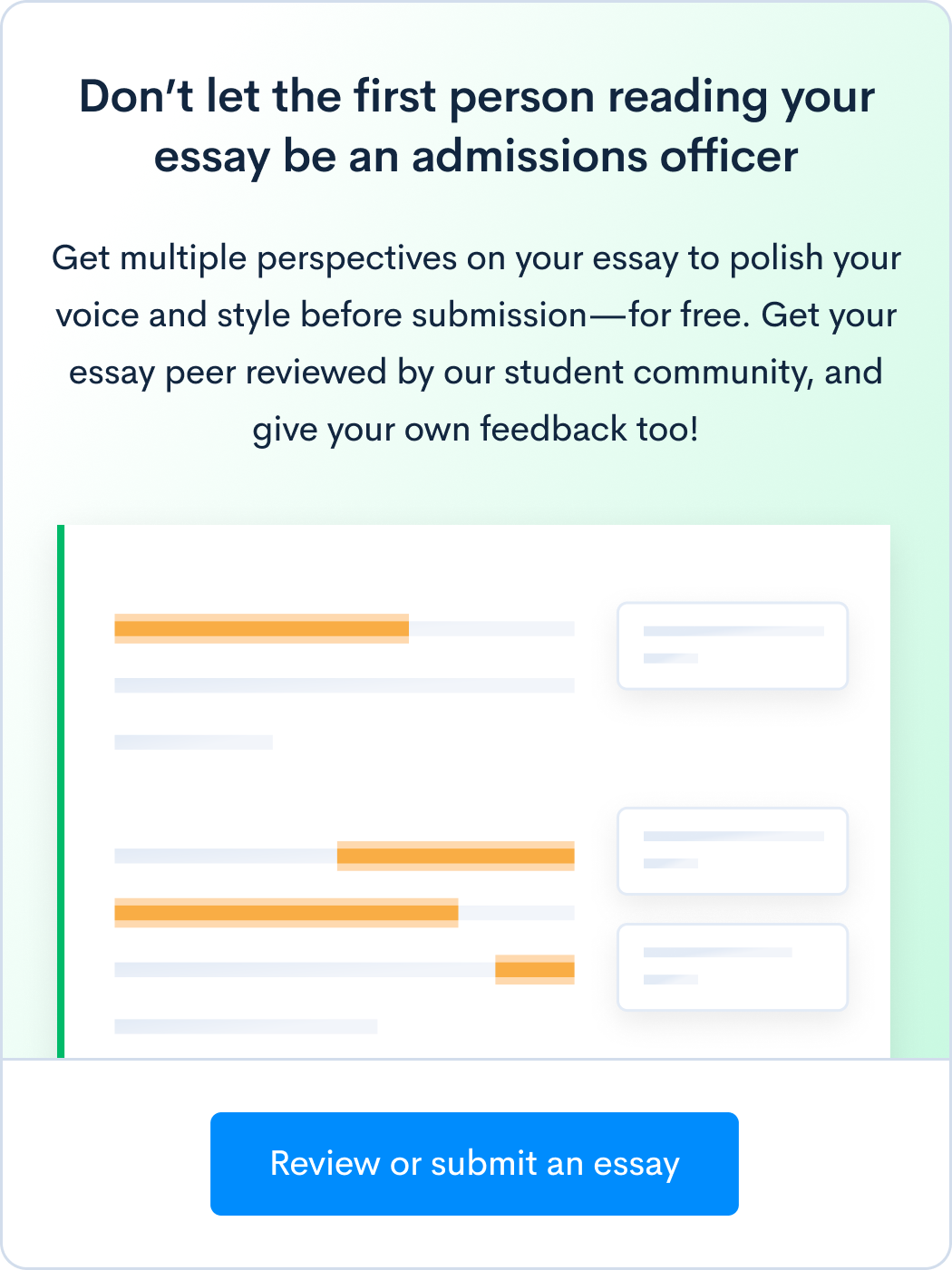How to Write the Texas A&M Supplemental Essays 2018-2019
For 2019-2020, please read our essay breakdown for ApplyTexas Essays.
Found sprawled across College Station, Texas, a city found between Houston and Austin, Texas A&M University is one of Texas’s flagship public research universities. The university boasts an undergraduate student body of over 50,000 and offers 130 majors.
According to US News, Texas A&M was ranked 4th out of public universities in the “Best Value School” category and is known worldwide for its research output. Notable alumni of A&M include football player Johny Manziel, politician Rick Perry, and actor Rick Torn.
A&M requires applicants to complete two essays, one from the ApplyTexas application and the other from the Coalition Application, and also includes an extra optional essay. Additionally, if you are applying as an arts major, another essay is required. We here at CollegeVine are here to help you navigate through these essays!
Texas A&M Supplemental Essay Questions:
ApplyTexas Application:
1. What was the environment you were raised in? Describe your family, home, neighborhood, or community, and explain how it has shaped you as a person. (Response required in about a page to a page and a half–no longer than 120 eighty-character lines of text.)
Coalition Application:
1. Tell a story from your life, describing an experience that either demonstrates your character or helped to shape it. (Response required in about a page to a page and a half.)
2. Personal interaction with objects, images and spaces can be so powerful as to change the way one thinks about particular issues or topics. For your intended area of study (architecture/interior design, art history, design, studio art, visual art studies/art education), describe an experience where instruction in that area or your personal interaction with an object, image or space affected this type of change in your thinking. What did you do to act upon your new thinking and what have you done to prepare yourself for further study in this area? *This essay is only required for Architecture/Interior Design, Art, Art History, Design, Studio Art, Visual Art Studies/Art Education major applicants
3. If there are additional personal challenges, hardships, or opportunities that have shaped or impacted your abilities or academic credentials, which you have not already written about, please note them in the space below. (Optional – 40 lines will be sent)
ApplyTexas Application:
What was the environment you were raised in? Describe your family, home, neighborhood, or community, and explain how it has shaped you as a person. (Response required in about a page to a page and a half–no longer than 120 eighty-character lines of text.)
This prompt is very straightforward but can be quite difficult to not over-exert yourself and dive into an autobiography. Focus on one of the listed examples, either family, home, neighborhood, or community, and then grow it from there (inevitably these categories will blend together, especially family and home—the end goal is simply to have a focused, compelling essay). “Community” is the broadest category by far: this could be a sports team, a band, a religious center, or just a group of friends.
The second part of the prompt is the most important: how your surroundings have shaped you as a person. What did you learn about yourself from the environment you were raised in? What are the values you feel like were cultivated from the people who raised you? What do you want to contribute to the world, and how did what you learned growing up shape it? Be specific here, as it may be cliche to simply say “I want to change and fix the world” or “I learned that my family and neighborhood love me.”
Here are some examples to guide you:
Example 1: If you choose to talk about your family, maybe your mother was a particularly inspirational figure in your life, a lady who worked two jobs and took care of you and your siblings, a lady who could exude great amounts of joy even though you knew she was always dead tired. Maybe for the majority of your life, you didn’t like your mom because other peoples’ moms were always home and cared for their children, while your mom was never home, but eventually, you came to appreciate your mom. However, you don’t want to spend the entire essay talking about your mother. Transition the essay back to yourself, and talk about how you, inspired by your mother’s character, grew within you the same sort of resolve. Talk about how you want to become a nurse and work to help improve the lives of those around you because you want to live your life as fully as your mom did.
Example 2: If you choose to talk about your neighborhood, you could talk about the racial diversity in your neighborhood, where you could find Vietnamese-Cajun food, Nigerian food, and Mexican food in a square mile. You could talk about the food as a lens into the different influences that surrounded you growing up, and how you became much more understanding of all the different ethnic groups in your neighborhood, especially as a daughter of immigrants yourself. You want to spend your life bringing together different types of people in whatever capacity, and you know that delicious food can always bring different types of people together for a good time.
Example 3: If you choose to talk about your community, maybe you were on the school’s basketball team for all four years, moving up from the freshman to the JV to the varsity team. You could talk about an important game you played in, where your team was coming off of a losing streak and morale was incredibly low. As the captain of your Varsity team, you also wanted to quit, but you pushed through and set the example, bringing your team to break the losing streak. You could talk about how you grew your leadership through this experience, how you, just like everyone else, had no gas left in the tank, but through understanding the weight of your position, took it upon yourself to raise up the people around you.
Example 4: Maybe your community is something larger than just a group of people but includes your city, which all went through Hurricane Harvey together. You could talk about how you and your family persevered through the incident and the subsequent recovery efforts, as well as how you came together with others from your city to rebuild what you had lost from the ground up. Maybe this has shaped how you view the world around you: everything and anything can be taken away and destroyed, but you can always get back up and try to rebuild what you lost. Maybe some things will never be recovered, but you know that this experience will forever hold a place in your heart, and will enable you to live stronger each day.
Coalition Application
Tell a story from your life, describing an experience that either demonstrates your character or helped to shape it. (Response required in about a page to a page and a half.)
You want to make sure that your Coalition Essay is different from the ApplyTexas essay. Because you have these two broad essays to talk about yourself, there is a lot of room to sprinkle in different aspects of your personality. If your first essay is serious and heavy in subject matter, you could be thinking about writing a more light-hearted Coalition essay to complement that. If you already have the Coalition essay written, maybe you’d want your ApplyTexas essay to complement the pre-existing Coalition essay.
The actual essay simply tells a story and talks about how you grew as a result. Make sure to always turn the story back to you—don’t spend too much space retelling a narrative. Another key is to not be shy: don’t be afraid to brag about yourself, or talk about some good that you did if you’re the type of person who feels uncomfortable sharing these things. This essay could be something monumental in your life, or something completely ordinary, as what matters is not the event, but how the event shaped who you are today.
You can use either a first person, present tense, to retell the story in a way that the reader feels like it is happening at that moment or a more reflective past tense. Whatever you feel like fits the tone and plot of your story better.
Here are some examples to guide you:
Example 1: Maybe your story is based on family, specifically around the huge extended family that congregates in your house every month. Through this experience, you have learned, most importantly, how important family is to you, and how you want to remain as connected as you can be. You could talk about how rowdy your family can get, and how sometimes people get into arguments, but how, at the end of the day, there is nothing but love. Maybe your Uncle Brett taught you the importance of sticking up for others, working as a public defense attorney, and your Grandma Lydia taught you the importance of cooking with love. You could use a specific anecdote from a particular gathering, and then transition it to talking about how exactly the people you raised you influenced how you want to live your life.
Example 2: Maybe this story is a bit more tragic: you experienced your father passing away due to cancer and spent countless nights on the hospital beds by his side. You are still recovering from his death, but through the experience, grew determined in your belief to help those who are suffering from similar inflictions. As a result, you want to study biomedical engineering at A&M to help create medical devices that will lead to better healthcare for patients. From the engineering side, you want to create technology that best allows patients to positively react to the drugs and treatments they may be undergoing.
Example 3: Maybe your passion and character are defined by making people laugh. You love doing performances with your school’s improv team, performing at school open mics, and just goofing around with your friends. You always wanted to perform at a local comedy club, but was always deathly afraid of the potential of failure, or even worse, being heckled. However, through the insistence of your friends, as well as your determination to succeed in comedy, you performed at the club to a few patrons, some who laughed and some who didn’t. The reception wasn’t what you had hoped for, but you gained the confidence to perform in front of strangers, and so you continued to do shows and got better and better.
Architecture/Interior Design, Art, Art History, Design, Studio Art, Visual Art Studies/Art Education major applicants
Personal interaction with objects, images and spaces can be so powerful as to change the way one thinks about particular issues or topics. For your intended area of study (architecture/interior design, art history, design, studio art, visual art studies/art education), describe an experience where instruction in that area or your personal interaction with an object, image or space affected this type of change in your thinking. What did you do to act upon your new thinking and what have you done to prepare yourself for further study in this area?
*This essay is only required for Architecture/Interior Design, Art, Art History, Design, Studio Art, Visual Art Studies/Art Education major applicants
If you have taken a class in the field you are intending to study in, you have the option of talking about a specific learning experience you’ve had in the field, such as a particular art lesson you had. If this is the case, you should choose a specific moment, whether it’s an interaction with a teacher or an experience with a certain fabric or the creation of a graphic design poster. And if you haven’t, don’t worry! You can instead talk about a personal interaction you’ve had with art that really piqued your interest in the field, even if you were self-taught.
It’s critical in this essay that you are as vivid as possible in your descriptions—the more senses you utilize the better. Because you are trying to distill a visual item into the written word, diction is particularly important.
Finally, you want the experience you are talking about to have shifted your perception of art or changed how much of your life you want to dedicate to creating art. You want to talk about how art just isn’t a hobby or side interest of yours but has become your primary interest that you would like to pursue long after college ends.
Here are some examples to help guide you:
Example 1: If you are applying as an architecture major, talk about your interactions with a particular building or structure that sparked your passion in the subject. This could be an iconic space like the Kimball Art Museum in Fort Worth or the Alamo Mission in San Antonio, or something more mundane, such as your house. Talk about how being in that space, feeling out the concrete, observing the cantilevers, seeing the historical cracks in the stone, all helped contribute to you really falling in love with architecture. You began to appreciate how much a physical space impacts the well being of the people inside, no matter what kind of space it is. You also began making your own sketches of buildings, creating models (most of which fell apart), and researching all the different types of buildings and architects in your area.
Example 2: Maybe you are applying as a studio art major and want to eventually become a painter. You could talk about a specific painting you did, maybe of yourself dressed in the clothes of your home country. Before doing this particular painting, art was just a hobby you enjoyed and were good at, but after completing the painting, art entrenched itself as something you wanted to do for the rest of your life. You wanted to paint people who looked like yourself, in ways that you didn’t see being shown in both the media and the art world.
Example 3: You could talk about an interaction with an art teacher you had, where you really wanted to keep doing art but weren’t sure if it was possible for you to live as an artist after graduating from college. Your teacher urged you to seriously consider it, naming all the strong qualities you possessed already as an artist, and how much further you progressed. Inspired by his words, you began to take his words more seriously and began building a portfolio of work you came to be incredibly proud of. You’d love to continue working on art at A&M’s state of the art facilities, especially in its ceramics studios, which your school does not have.
If there are additional personal challenges, hardships, or opportunities that have shaped or impacted your abilities or academic credentials, which you have not already written about, please note them in the space below. (Optional – 40 lines will be sent)
Here you have the opportunity to talk about something you’d like to mention if you haven’t had anywhere else to talk about it in the essay (you also have the opportunity to submit a resume if you feel like the space on the application is insufficient). However, considering the sheer amount of applications that get sent in to the A&M system each year, you should probably leave it blank unless there is something absolutely necessary you feel the need to talk about, such as an extreme hardship or a special award. If you choose to do so, make sure to keep it brief, as the word count suggests.
Want help with your college essays to improve your admissions chances? Sign up for your free CollegeVine account and get access to our essay guides and courses. You can also get your essay peer-reviewed and improve your own writing skills by reviewing other students’ essays.





